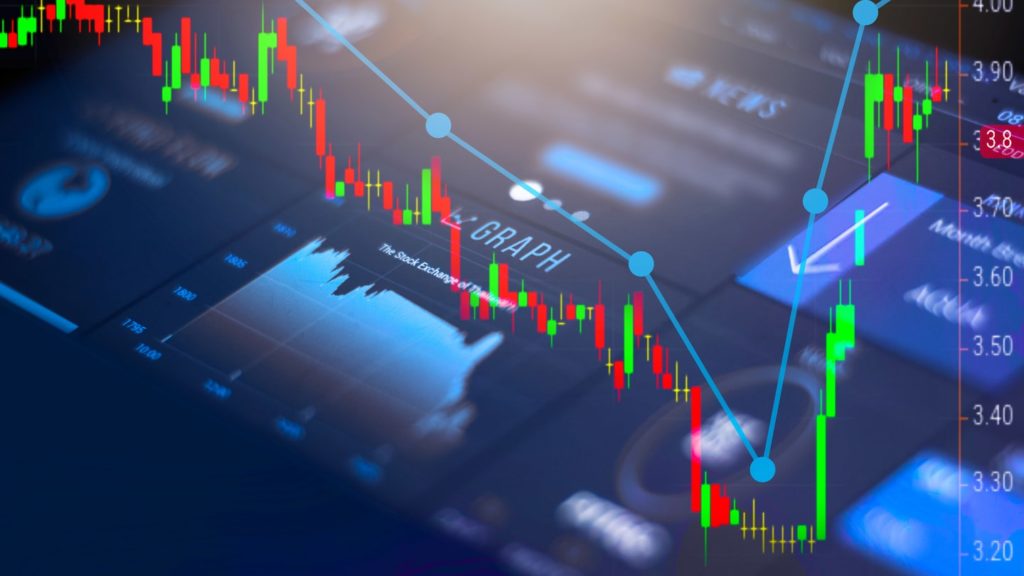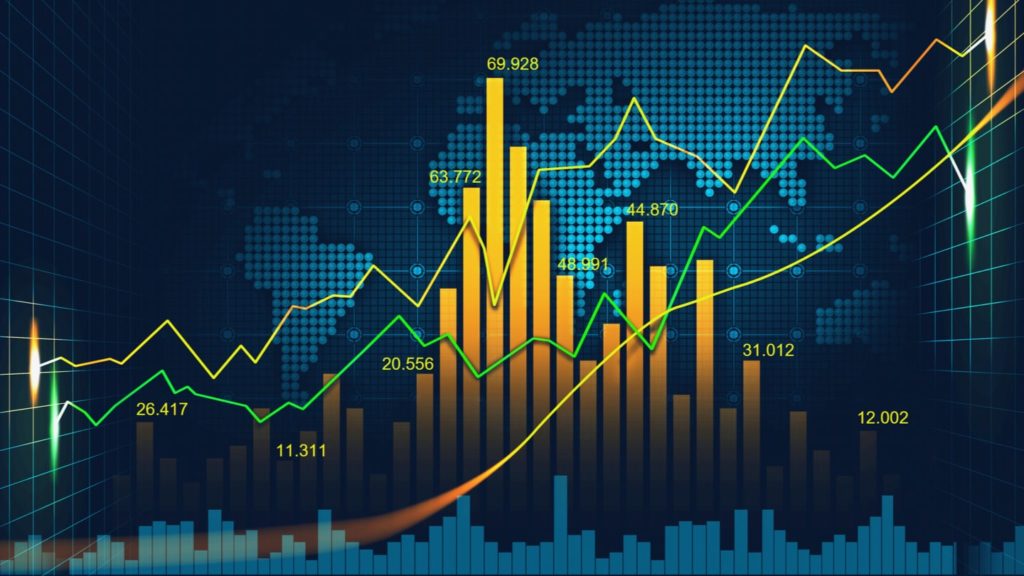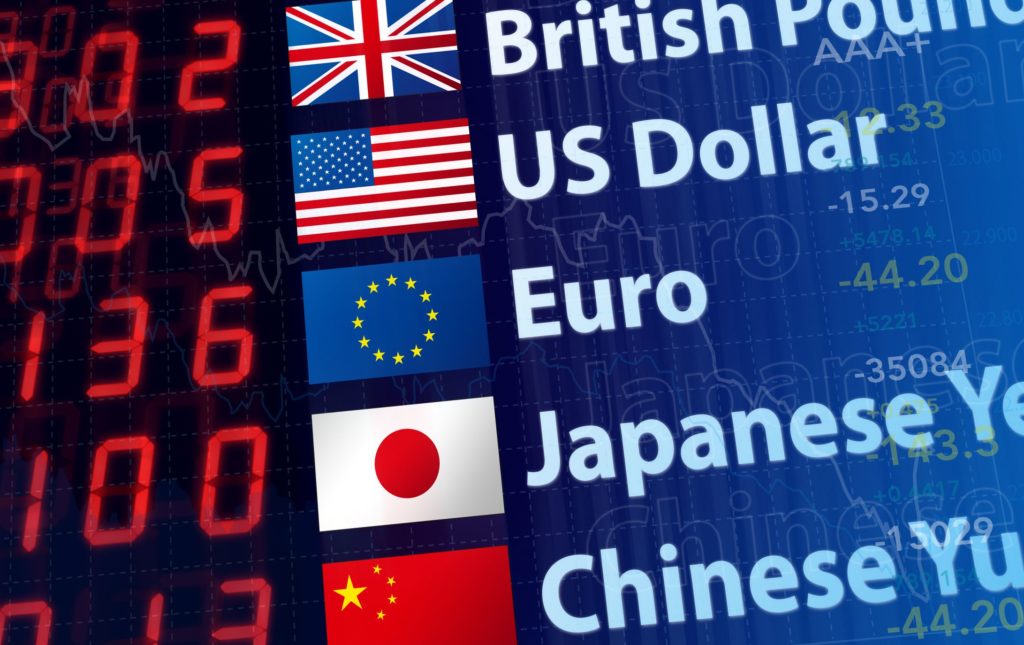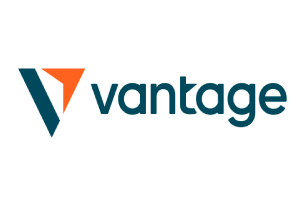Looking to start forex trading online, but not too sure where to start? Well, you’ve certainly come to the right place, as we’re going to show you everything you need to know to get your forex trading career off on the right foot.
Our Forex Signals
1 - month
Subscription
 Up to 15 signals daily
Up to 15 signals daily 76% success rate
76% success rate Entry, take profit & stop loss
Entry, take profit & stop loss Amount to risk per trade
Amount to risk per trade Risk reward ratio
Risk reward ratiomonth
3 - month
Subscription
 Up to 15 signals daily
Up to 15 signals daily 76% success rate
76% success rate Entry, take profit & stop loss
Entry, take profit & stop loss Amount to risk per trade
Amount to risk per trade Risk reward ratio
Risk reward ratiomonth
 Most popular
Most popular
6 - month
Subscription
 Up to 15 signals daily
Up to 15 signals daily 76% success rate
76% success rate Entry, take profit & stop loss
Entry, take profit & stop loss Amount to risk per trade
Amount to risk per trade Risk reward ratio
Risk reward ratiomonth
Lifetime
Subscription
 Up to 15 signals daily
Up to 15 signals daily 76% success rate
76% success rate Entry, take profit & stop loss
Entry, take profit & stop loss Amount to risk per trade
Amount to risk per trade Risk reward ratio
Risk reward ratioSeparate Swing Trading Group
 Up to 3 signals weekly
Up to 3 signals weekly 76% success rate
76% success rate Entry, take profit & stop loss
Entry, take profit & stop loss Amount to risk per trade
Amount to risk per trade Risk reward ratio
Risk reward ratiomonth
1 - month
Subscription
 Up to 15 signals daily
Up to 15 signals daily 76% success rate
76% success rate Entry, take profit & stop loss
Entry, take profit & stop loss Amount to risk per trade
Amount to risk per trade Risk reward ratio
Risk reward ratiotime
The industry itself typically sees trillions and pounds worth of currencies change hands every day, so you’ll be joining heaps of retail and institutional investors alike. The overarching concept is to profit off of price movements between two competing currencies – such as GBP and USD.
Eightcap - Regulated Platform With Tight Spreads

- Minimum deposit of just 250 USD to get lifetime access to all the VIP channels
- Use our Secure and Encrypted Infrastructure
- Spreads from 0.0 pips on Raw Accounts
- Trade on the Award-Winning MT4 & MT5 Platforms
- Multi-jurisdictional Regulation
- No Commission Trading on Standard Accounts

Nevertheless, we would suggest reading our guide on Forex Trading for Beginners: How to Trade Forex and Find the Best Platform before getting started. Not only we will give you the ins and outs of how forex works, but we’ll also list our top 3 forex broker picks for 2023.
3
Payment methods
Trading platforms
Regulated by
Support
Min.Deposit
Leverage max
Currency Pairs
Classification
Mobile App
Min.Deposit
$100
Spread min.
Variables pips
Leverage max
100
Currency Pairs
40
Trading platforms
Funding Methods





Regulated by
FCA
What you can trade
Forex
Indices
Actions
Cryptocurrencies
Raw Materials
Average spread
EUR/GBP
-
EUR/USD
-
EUR/JPY
0.3
EUR/CHF
0.2
GBP/USD
0.0
GBP/JPY
0.1
GBP/CHF
0.3
USD/JPY
-
USD/CHF
0.2
CHF/JPY
0.3
Additional Fee
Continuous rate
Variables
Conversión
Variables pips
Regulation
Yes
FCA
No
CYSEC
No
ASIC
No
CFTC
No
NFA
No
BAFIN
No
CMA
No
SCB
No
DFSA
No
CBFSAI
No
BVIFSC
No
FSCA
No
FSA
No
FFAJ
No
ADGM
No
FRSA
71% of retail investor accounts lose money when trading CFDs with this provider.
Min.Deposit
$100
Spread min.
- pips
Leverage max
400
Currency Pairs
50
Trading platforms
Funding Methods




Regulated by
CYSECASICCBFSAIBVIFSCFSCAFSAFFAJADGMFRSA
What you can trade
Forex
Indices
Actions
Cryptocurrencies
Raw Materials
Etfs
Average spread
EUR/GBP
1
EUR/USD
0.9
EUR/JPY
1
EUR/CHF
1
GBP/USD
1
GBP/JPY
1
GBP/CHF
1
USD/JPY
-
USD/CHF
1
CHF/JPY
1
Additional Fee
Continuous rate
-
Conversión
- pips
Regulation
No
FCA
Yes
CYSEC
Yes
ASIC
No
CFTC
No
NFA
No
BAFIN
No
CMA
No
SCB
No
DFSA
Yes
CBFSAI
Yes
BVIFSC
Yes
FSCA
Yes
FSA
Yes
FFAJ
Yes
ADGM
Yes
FRSA
71% of retail investor accounts lose money when trading CFDs with this provider.
Min.Deposit
$50
Spread min.
- pips
Leverage max
500
Currency Pairs
40
Trading platforms
Funding Methods




What you can trade
Forex
Indices
Actions
Raw Materials
Average spread
EUR/GBP
-
EUR/USD
-
EUR/JPY
-
EUR/CHF
-
GBP/USD
-
GBP/JPY
-
GBP/CHF
-
USD/JPY
-
USD/CHF
-
CHF/JPY
-
Additional Fee
Continuous rate
-
Conversión
- pips
Regulation
No
FCA
No
CYSEC
No
ASIC
No
CFTC
No
NFA
No
BAFIN
No
CMA
No
SCB
No
DFSA
No
CBFSAI
No
BVIFSC
No
FSCA
No
FSA
No
FFAJ
No
ADGM
No
FRSA
71% of retail investor accounts lose money when trading CFDs with this provider.
Note: Learning how to identify trading opportunities in the forex space is no easy feat. This is why you need to learn how to trade properly before risking your own funds.
What are the Pros and Cons of Forex Trading?
The Pros
The Cons
What is Forex Trading?
Forex – also referred to as ‘FX’, stands for foreign exchange. In its most basic form, forex trading is the process of exchanging one currency for another. For example, if you were to exchange GBP for EUR, this would represent a forex trade. With that being said, forex trading is one of the most liquid financial markets in the world.
In fact, large banks trade trillions of pounds worth of currencies every day. This is one of the main reasons that the forex space has since reached the retail day trading sector. Crucially, it is now possible to buy, sell, and trade dozens of currencies from the comfort of your own home, and even via a mobile device.

The main premise of trading forex is that you are speculating whether the value of one currency will go up or down against another. FX trading is also based on a currency ‘pair’, which will include two competing currencies. For example, GBP/USD would see traders speculate on the pound sterling and US dollar, and EUR/CHF would consist of the euro and Swiss franc.
In terms of making a profit, you would need to speculate which way the markets will go, and then decide how much you wish to invest. Some forex brokers are catered exclusively for newbie traders, so you can get started with trades of just a few pounds. This is the best way to learn the ins and outs of trading forex without risking large amounts of money.
How to Trade Forex?
Much like any other asset class active in the online investment space, the overarching concept of forex trading is to make money. As such, you need to choose a currency pair that you are comfortable trading, and then decide which way you think the markets will go.
Before you can place a trade, you need to understand what a currency pair typically looks like. Pairs will always consist of two currencies, and the price of the pair is based on the real-time exchange rate.
Note: If you think that the left-sided currency of a pair is going to increase in value, you need to place a ‘buy’ order. Alternatively, if you think that the right-sided currency will increase, you need to place a ‘sell’ order.
Forex Trading Example 1: Buy Order on GBP/USD
In order to clear the mist, let’s say that you decide to trade GBP/USD. In the world of forex, this currency pair is known as ‘The Cable’. Upon studying the charts for days on end, you are confident that GBP is about to break bullish, meaning that the markets believe it will increase in price against the USD.
Here’s how your trade would work in practice.
- GBP/USD is currently priced at 1.40.
- This means that for every £1, you’ll get $1.40.
- As you think GBP will increase in price against the USD, you need to place a buy order.
- This is because GBP is on the left-hand side of the pair.
- You decide to stake £500.
- Two hours after placing your order, GBP/USD is now worth 1.50.
- As you bought the pair when it was priced at 1.40, this represents a profit of 7.14%.
- Therefore, your £500 trade made £35.70 in gains.
Note: As you can see from the above example, you made a profit because [A] you placed a buy order at 1.40 and [B] GBP/USD increased to 1.50.
Forex Trading Example 2: Sell Order on GBP/USD
To keep things simple, let’s stick with the same example on GBP/USD. Only this time, we are going to place a ‘sell’ order. Why? Because we think that the price of USD will increase against GBP. This is where things get a bit confusing.
Although we are speculating that the USD will increase, we need the exchange rate to go down. This is because USD is on the right side of the pair, meaning that the exchange rate is based on dollars, not pounds.
With that said, let’s look at a quick example of what a GBP/USD sell order would look like.
- GBP/USD is currently priced at 1.40.
- This means that for every £1, you’ll get $1.40.
- As we believe the USD will increase in price, we want the GBP to fall.
- This means we place a sell order.
- Once again, we stake £500 on the trade.
- Later that day, GBP/USD goes down to 1.35.
- This is exactly what we wanted, as a reduction in the exchange rate means that the USD is getting stronger against GBP.
- Happy with our gains, we decide to close our sell order at a profit of 3.57%.
- On our stake of £500, we made £17.84 in gains.
Note: As you can see from the above example, we made a profit when the price of GBP/USD fell, because we placed a sell order.
Forex Trading Pairs: Majors, Minors, and Exotics
So now that you know how a typical buy and sell order works, we now need to think about the type of currencies that we want to trade. In the world of FX trading, this is split into three categories – majors, minors, and exotics.
✔️ Majors
The most-traded currencies in the world are known as major currencies. This includes the likes of GBP, EUR, USD, JPY, and CHF. In terms of the pair itself, majors will always consist of two major currencies. For example, GBP/USD or USD/JPY.
Trading majors is always the most sensible option when you are just starting out. This is because majors benefit from the largest amounts of liquidity, which in turn, results in a tighter
Don’t worry, we’ll cover the spread in more detail later.
✔️ Minors
Minors are slightly less liquid than majors. One side of a minor pair will contain a major currency, and the other side will have a weaker currency. For example, USD/NZD would consist of the US dollar as the major currency, and the New Zealand dollar would represent the less liquid currency.
✔️ Exotics
If you’ve got a higher appetite for risk, then you might want to consider trading exotic pairs. These consist of one major currency like GBP and an emerging currency like the Turkish Lira. Exotic pairs are in much lower demand from financial institutions, meaning that the spread will be much higher.
You will also find that exotic pairs are much more volatile than majors and minors. As such, your profits and losses will be amplified.
What is the Spread in Forex?
One of the most common terms utilized in the forex space is that of the ‘spread’. You might remember how we gave you an example of both a buy and sell order earlier in our guide. Well, the spread is simply the difference between the buy price and sell price. If you’re wondering why there is a difference, this is because forex brokers make their money from the spread.
In layman’s terms, the wider the gap between the buy and sell price, the more you are indirectly paying in fees. For example, let’s say that the buy price of EUR/USD is 1.10, and the selling price is 1.11. This means that the spread amounts to 0.9%.
However, in the world of forex trading, we don’t refer to the spread as a percentage per-say. On the contrary, we calculate the spread in ‘pips’.
Note: Pip stands for ‘percentage in points’. This is the smallest amount in which a currency pair can move in the open marketplace.
Pips
The specific pip calculation is based on the currency in question. With that said, any pair that is priced in USD will typically see 1 pip amount to $0.0001. If you’re wondering why such a small fraction of a cent is used to determine the pip, this is just how forex trading works.
You see, in the trading examples we have given so far, we have expressed our prices with just two decimals (such as 1.40, 1.35, etc.). However, forex trading is based on ultra-small pricing movements, meaning that most pairs go out to 4 decimals.
It’s probably best that we look at a quick example of how pips work in practice.
Example of Pips in Forex
Let’s say that we are trading Euros against the US dollar, so we’ll opt for the EUR/USD pair. We believe that EUR will increase in value against USD, so we need to place a buy order.
- We place a buy order on EUR/USD at 1.2050.
- As you can see, EUR/USD goes out to 4 decimals.
- As such, every time the final decimal moves by 1, that would indicate 1 pip.
- For example, if EUR/USD went from 1.2050 to 1.2053, that would represent 3 pips.
Example of the Spread Using Pips
So now that you know what both the spread and pips are, we can now give you a real-world example. To keep things simple, let’s stick with EUR/USD.
- As we are trading EUR/USD, a buy order would indicate that we think EUR will increase in price over USD.
- Similarly, a sell order would mean that we think USD will increase in price of over EUR.
- Before we place our trade, we need to calculate the spread.
- The buying price is 0.1590, and the selling price is 0.1600.
- This would represent a difference of 0.0010.
- As such, the spread is 10 pips.
- As some brokers offer pips of just 0.7 on EUR/USD, this is hugely expensive!
Applying Leverage When Forex Trading
So now that you have a firm grasp of how a forex trade would work in practice, as well as an understanding of both the spread and pips, we are now going to explore leverage. In a nutshell, leverage allows you to trade with more than you have in your account. You are effectively borrowing money from the forex broker in order to amplify your margins.

On the one hand, this can result in huge profits if a trade goes in your favor. However, it can also result in huge losses if the opposite happens. As such, you need to be extremely careful when applying leverage to your trades. In fact, unless you have a firm understanding of how to set-up stop-losses on your trades, you should avoid leverage in its entirety.
Before we explain how much leverage you’ll be able to apply when trading forex, let’s look at a quick example of a leveraged trade.
Example of Using Leverage in Forex Trading
Let’s say that we are trading GBP/USD. To keep things simple, we’ll say that the current exchange rate is 1.50.
- We are confident about the future price of GBP, so we decide to place a buy order.
- Our total stake amounts to £250.
- As we apply leverage at 10:1, we are effectively trading with £2,500, even though we only put £250 up as margin.
- Over the course of the day, GBP increases by 2%.
- On the trade of £250, that amounts to gains of £5.
- However, as we applied leverage of 10:1, our profits are amplified to £50 (£5 x 10).
The Risks of Leverage
As great as a successful leverage trade can be for your profits, the risks are super-high. This is because your losses can also be amplified – and quickly. When we place a leveraged trade, we are required to put up a margin. In the above example, this was 10% of the total trade size, as the leverage ratio was 10:1. Similarly, if the leverage was 25:1, a £25,000 trade would require £1,000 in the margin.
Note: The risks of trading with leverage can be reduced significantly when you install sensible stop-losses.
If your trade subsequently went against you, you stand the risk of losing your margin in its entirety. This will occur if your trade encounters losses that are equal to the margin amount. For example, if your margin amounts to 20% (20:1 leverage), and the value of your order declined by 20% in the open marketplace, then you will lose your margin.
Forex Leverage Limits
If you’re based in the UK and thus – using a forex broker that is regulated by the Financial Conduct Authority (FCA), then the online trading platform will need to comply with the leverage limits imposed by the European Securities and Markets Authority (ESMA).
This limits leverage ratios to 30:1 on major pairs, and 20:1 on both minors and exotics.
Forex Trading Fees
In order to trade forex online, you will need to use an online broker. Also referred to as a trading platform, brokers will charge you a fee to use their services. The specific fee will vary from broker-to-broker, although they typically include one of the following.

🥇 Commission
Unlike CFDs, it’s all-but-certain that your broker will charge you a commission to trade forex. This is usually based on the size of your trade, and calculated as a percentage.
For example, let’s say that the commission is 0.5%, and the value of your trade was £1,500. This would mean that you’ll pay £7.50 to open the trade, and then a further 0.5% when you decide to close it.
🥇 Spread
Although we’ve already discussed how the spread works, it’s important to recognize that this is an additional fee that needs to be considered. For example, let’s say that you are trading EUR/USD, and the spread is 2 pips. If you placed a buy order, the price of EUR/USD would need to go up by 2 pips just to break even.
As such, when your buy order is initially executed, you would be 2 pips down. Similarly, if you placed a sell order and the spread was 2 pips, then you would need to price of EUR/USD to go down by 2 pips just to break even.
🥇 Minimum Commission
Although the underlying commission charged by a forex broker rate might appear competitive, some platforms will require a minimum amount of commission each month. For example, if the minimum monthly commission is $10, but you only pay $7 throughout the month, you’ll need to pay the extra $3 to cover the shortfall.
🥇 Overnight Financing Fees
If you decide to apply leverage to your forex trades, and you keep the position open overnight, you will need to pay financing fees. This is no different from borrowing money from a high street bank, insofar that you’ll need to pay interest on the funds that the broker lends you.
This is why traders rarely keep leveraged positions held open overnight, not least because the interest makes the trade unviable.
🥇 Deposit and Withdrawal Fees
You also need to make some considerations regarding deposit and withdrawal fees. While not all brokers charge them, some do.
How to Choose a Forex Trading Platform?
There’s certainly no shortage of forex brokers active in the UK trading space. With that said, you need to find a platform that is right for your individual needs.
Below we have broken down some of the main factors that you need to look out for when choosing a forex trading platform.
🥇 Regulation
If a forex broker wishes to accept clients from the UK, it must be regulated by the FCA. If it doesn’t hold an FCA license, avoid the broker at all costs.
🥇 Payments
Think about the payment method that you wish to deposit funds with. Most brokers accept a bank transfer and debit/credit card, while others support e-wallets
🥇 Fees
Evaluating the fee structure of your chosen broker. If the broker charges a commission, find out how much this is, and whether there are any monthly minimums.
🥇 Spreads
In a similar nature to trading fees, you also need to assess what kind of spreads the forex broker charges. Some of the most competitively-priced brokers in the space charge just 0.7 pips on major pairs.
🥇 Number of Forex Pairs
Spend some time browsing through the broker’s trading arena to assess how many forex pairs it lists. We prefer brokers that cover most majors and minors, as well as a good number of exotics.
🥇 Trading and Research Tools
If you’re looking to make a success out of your forex trading career, it’s crucial that you learn how to use technical indicators. This will allow you to analyze historical pricing trends of your chosen forex pair, and determine how the markets might move next.
Best Forex Trading Platforms 2023
Don’t have the time to research your own broker? Be sure to explore the three forex trading platforms that we have recommended below.
1. AVATrade – 2 x $200 Forex Welcome Bonuses
The team at AVATrade are now offering a huge 20% forex bonus of up to $10,000. This means that you will need to deposit $50,000 to get the maximum bonus allocation. Take note, you'll need to deposit a minimum of $100 to get the bonus, and your account needs to be verified before the funds are credited. In terms of withdrawing the bonus out, you'll get $1 for every 0.1 lot that you trade.

- 20% welcome bonus of upto $10,000
- Minimum deposit $100
- Verify your account before the bonus is credited
2. VantageFX – Ultra-Low Spreads
VantageFX VFSC under Section 4 of the Financial Dealers Licensing Act that offers heaps of financial instruments. All in the form of CFDs - this covers shares, indices, and commodities.
Open and trade on a Vantage RAW ECN account to get some of the lowest spreads in the business. Trade on institutional-grade liquidity that is obtained directly from some of the top institutions in the world without any markup being added at our end. No longer the exclusive province of hedge funds, everyone now has access to this liquidity and tight spreads for as little as $0.
Some of the lowest spreads in the market may be found if you decide to open and trade on a Vantage RAW ECN account. Trade using institutional-grade liquidity that is sourced directly from some of the top institutions in the world with zero markup added. This level of liquidity and availability of thin spreads down to zero are no longer the exclusive purview of hedge funds.

- The Lowest Trading Costs
- Minimum deposit $50
- Leverage up to 500:1
3. EightCap – Trade Over 500+ Assets Commission-Free
EightCap is a popular MT4 and MT5 broker that is authorized and regulated by ASIC and the SCB. You will find over 500+ highly liquid markets on this platform - all of which are offered via CFDs. This means that you will have access to leverage alongside short-selling capabilities.
Supported markets include forex, commodities, indices, shares, and cryptocurrencies. Not only does EightCap offer low spreads, but 0% commissions on standard accounts. If you open a raw account, then you can trade from 0.0 pips. The minimum deposit here is just $100. You can choose to fund your account with a debit or credit card, e-wallet, or bank wire.

- ASIC regulated broker
- Trade over 500+ assets commission-free
- Very tight spreads
- Leverage limits depend on your location
Conclusion
If you’ve taken the time to read our guide on Forex Trading for Beginners, you should now have a firm grasp of how the industry works. We’ve explained everything from buy and sell orders, the spread, pips, leverage, and crucially – the risks of trading online.
We’ve also explained how the many factors that you need to look out for prior to choosing a new forex broker. This allows you to perform your own research on the platform prior to opening an account. If you don’t have the time to do this, we’ve also presented our top 3 forex broker picks for 2023.
Ultimately, just make sure that you always install sensible stop-loss orders when trading forex – especially if applying leverage. In doing so, you will limit the amount of money that you lose from an unsuccessful trade.
AvaTrade - Established Broker With Commission-Free Trades

- Minimum deposit of just 250 USD to get lifetime access to all the VIP channels
- Awarded Best Global MT4 Forex Broker
- Pay 0% on all CFD instruments
- Thousands of CFD assets to trade
- Leverage facilities available
- Instantly deposit funds with a debit/credit card

FAQs
How do I deposit funds at a forex trading broker?
What is the best way to learn forex trading?
What is the minimum deposit required at a forex trading platform?
Are online forex brokers safe?
What is the most traded forex pair?
How much leverage can I apply to major forex pairs?
How do I withdraw my forex trading profits?
Read more related Articles:

